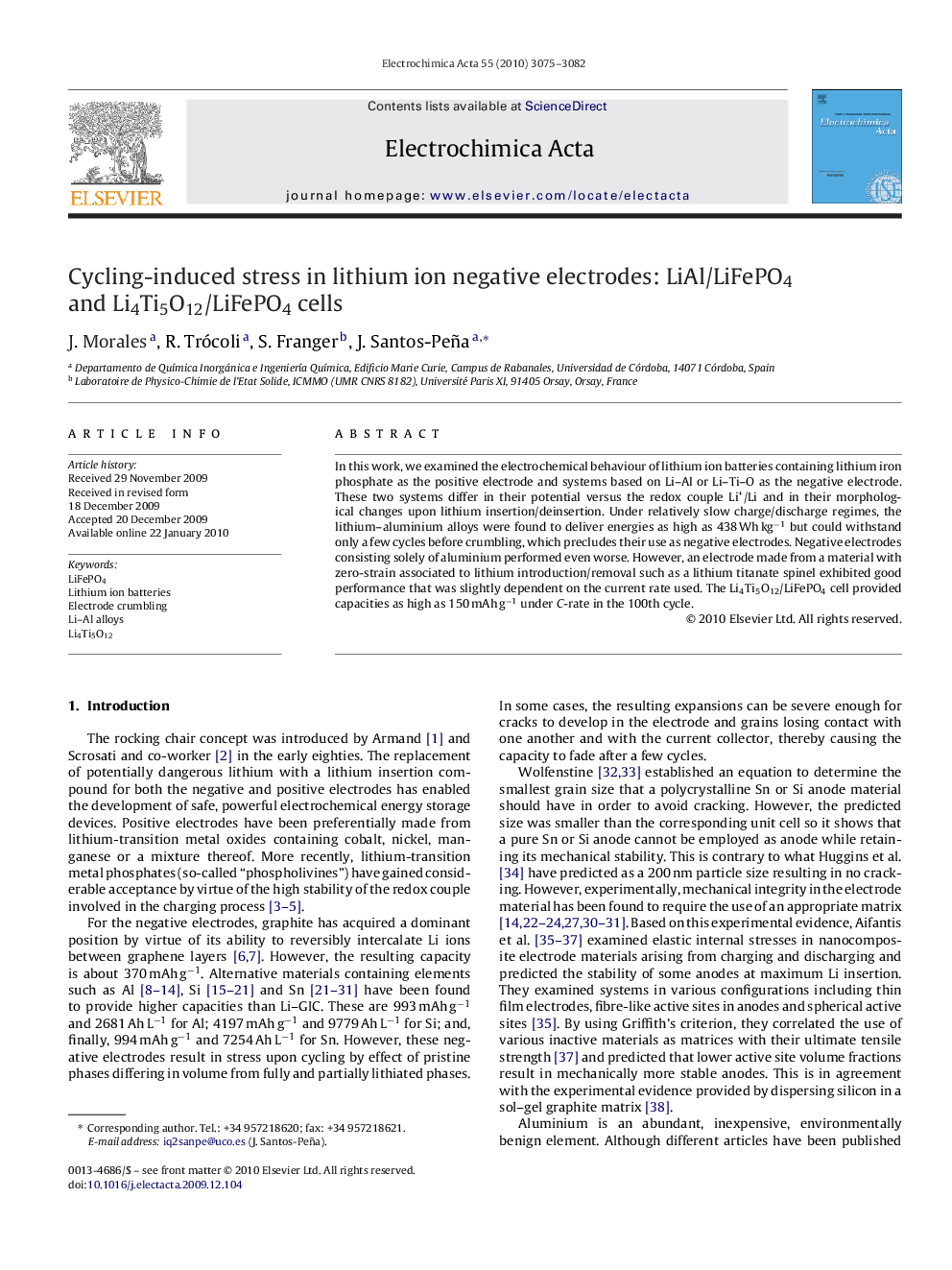| Article ID | Journal | Published Year | Pages | File Type |
|---|---|---|---|---|
| 191596 | Electrochimica Acta | 2010 | 8 Pages |
In this work, we examined the electrochemical behaviour of lithium ion batteries containing lithium iron phosphate as the positive electrode and systems based on Li–Al or Li–Ti–O as the negative electrode. These two systems differ in their potential versus the redox couple Li+/Li and in their morphological changes upon lithium insertion/deinsertion. Under relatively slow charge/discharge regimes, the lithium–aluminium alloys were found to deliver energies as high as 438 Wh kg−1 but could withstand only a few cycles before crumbling, which precludes their use as negative electrodes. Negative electrodes consisting solely of aluminium performed even worse. However, an electrode made from a material with zero-strain associated to lithium introduction/removal such as a lithium titanate spinel exhibited good performance that was slightly dependent on the current rate used. The Li4Ti5O12/LiFePO4 cell provided capacities as high as 150 mAh g−1 under C-rate in the 100th cycle.
